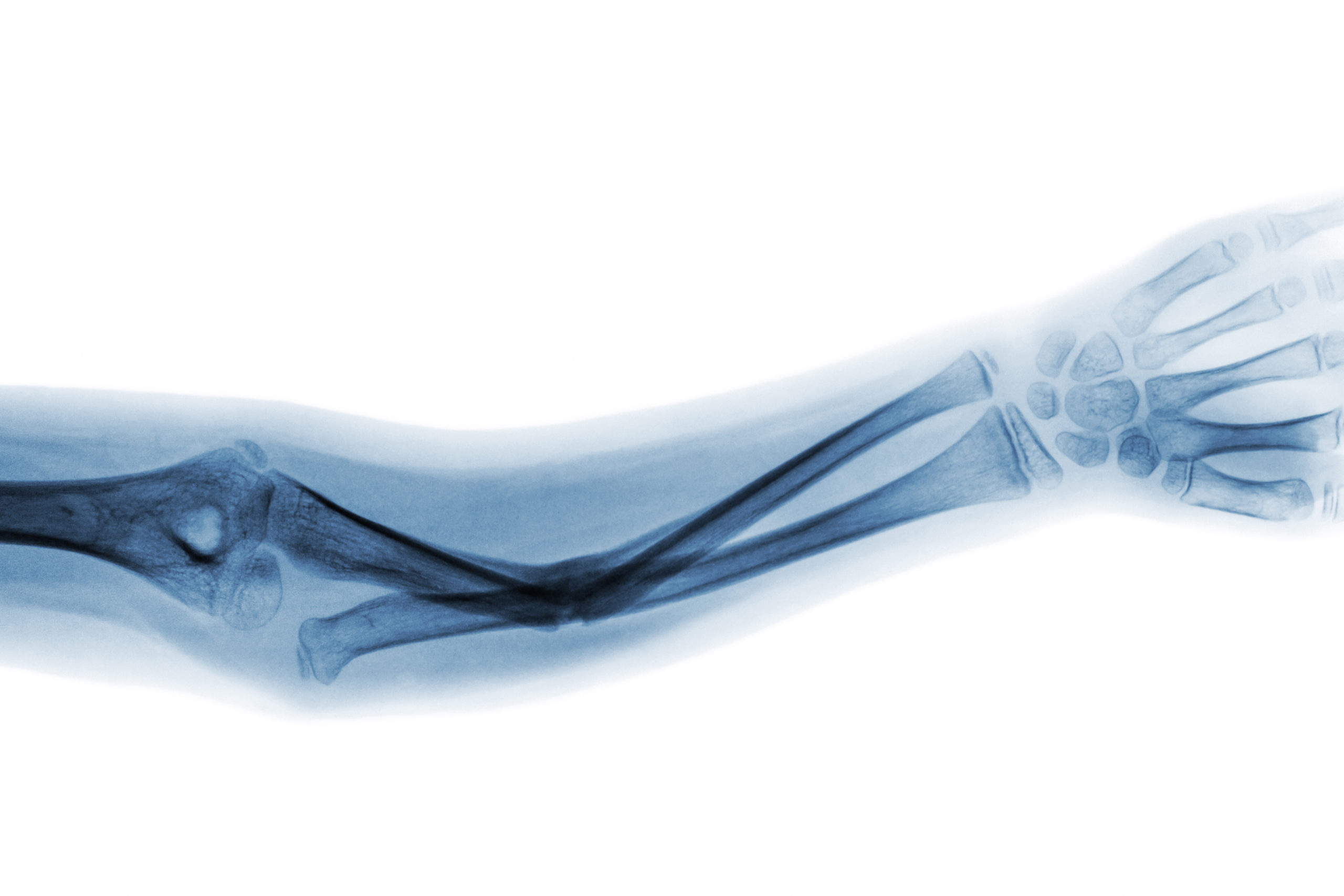
 The elbow is made up of three main bones: the humerus, the radius and the ulna. The elbow joint consists of portions of these three bones: the distal humerus is the centre of the elbow, the radial head moves around the distal humerus and rotates when the wrist is turned, and the olecranon is the bony part of the elbow that protrudes when your arm is flexed and which cups the end of the humerus.
The elbow is made up of three main bones: the humerus, the radius and the ulna. The elbow joint consists of portions of these three bones: the distal humerus is the centre of the elbow, the radial head moves around the distal humerus and rotates when the wrist is turned, and the olecranon is the bony part of the elbow that protrudes when your arm is flexed and which cups the end of the humerus.
The elbow is quite a complex region, with a wide range of motion that allows you to flex, stretch and rotate your arm. A broken elbow is a break to any of these portions of the arm. It is very painful and will require immediate treatment.
Causes of a broken elbow
There are three main types of elbow fractures:
• Olecranon fractures: These kinds of fractures are usually displaced and will require surgery in order to re-align the bone fragments with pins and screws. The olecranon has little protection from muscles or soft tissue are heavy blow may cause a break.
• Distal humerus fractures: These fractures are more common in children and the elderly. Again surgery is often required in order to re-align the bone with pins and screws.
• Radial head/neck fractures: These fractures are usually displaced, and complex fractures will require surgery in order to move or replace the radial head if there are too many broken pieces.
Symptoms of a broken elbow
A broken elbow will be extremely debilitating due to the complexity of the region. Pain, numbness and weakness throughout the entire arm is common, and the elbow joint will be extremely painful, bruised and swollen making it hard to move. A snap or pop may be audible when impact occurs.
When is hand therapy necessary?
For most elbow fractures it is necessary to see your doctor. They will refer you for x-rays to help determine whether you can be managed conservatively by cast immobilisation or require surgery to obtain correct bone alignment in order to ensure a healthy healing process. As you can see above this is often necessary. Your hand therapist will be able to provide you with a thermoplastic splint or waterproof cast to assist in fracture healing. They can also help you regain flexibility and upper limb strength during the healing phase.
Surgical treatment
Surgery is usually required for severe breaks with displaced fractures. Fixation devices including screws, plates, nails or K-wire will help stabilise the healing process. You will usually be referred to a hand therapist following surgery to help control swelling, regain motion, and provide a removable brace to protect the surgical site.
If you have any questions regarding a broken arm, elbow or any other condition you have or to book an appointment, feel free to contact us here. Hand Therapy would be more than happy to help.

